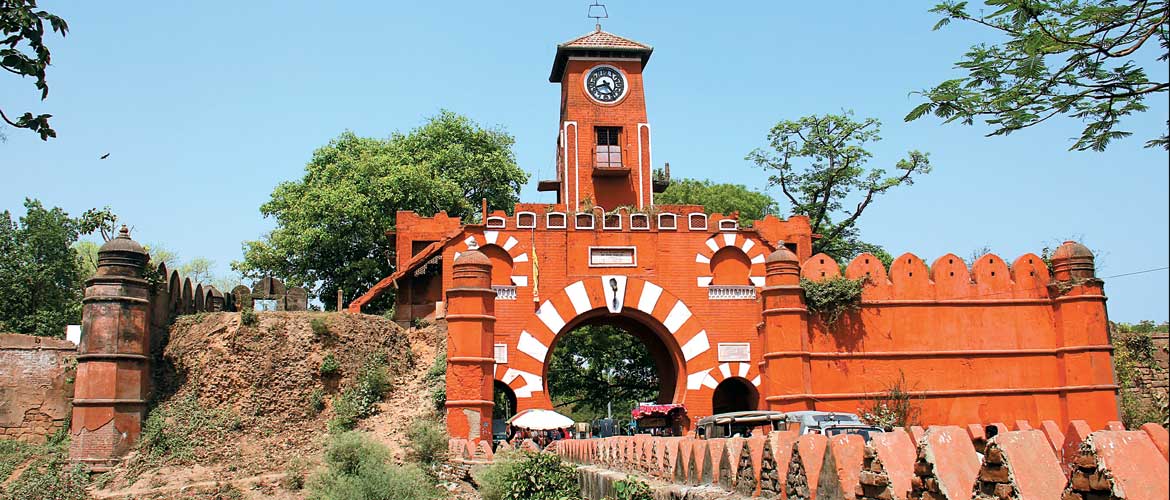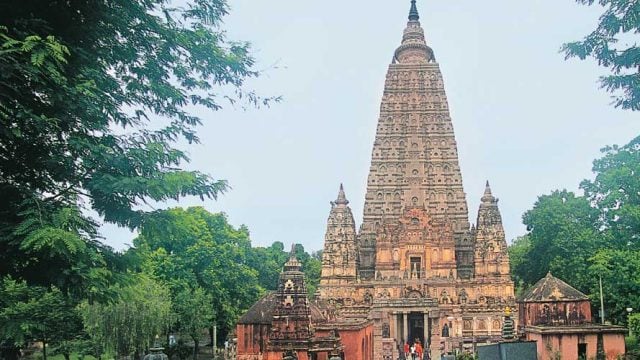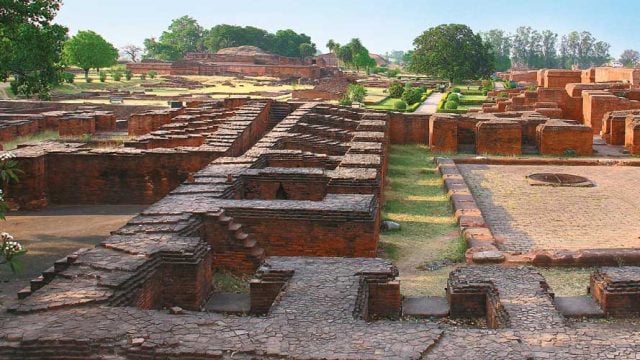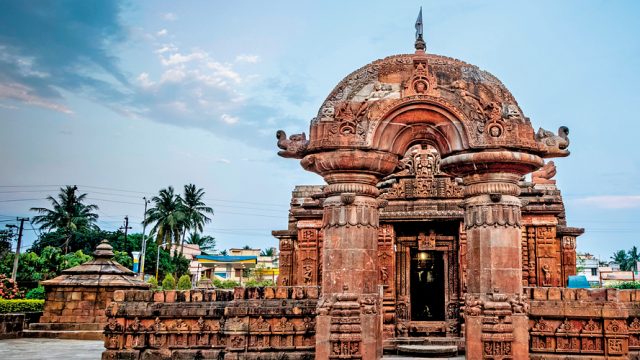Guns and yoga—that’s what Munger is famous for. In 1762, when Mir Qasim, the Nawab
THINGS TO SEE AND DO
Don’t let the guns scare you, for the city is as safe a place as any other. Besides, Munger is home to the renowned Bihar School of Yoga and has a plethora of sites of historical and religious interest as well as picturesque hills and forests.
Munger Fort
Dating back to the 14th century, the Munger Fort is located on the southern bank of the Ganga on a rocky hillock. The fort occupies an area of 222 acres and its ramparts are 21 miles long and 30 ft thick. A 175-ft-wide moat (now dry) surrounds the fort which has three gates, of which the southern gate is the main entry point.
A major landmark of the city, the fort, though dilapidated in parts, is inhabited by government offices and parks jostling with monuments. Most of the tourist sites of Munger – the Kashtaharni Ghat, Pir Nafah dargah and the Bihar School of Yoga – are located inside the fort. With tree-lined avenues and sparse traffic, the fort is a great place for a walk.
Kashtaharni Ghat
According to the Ramayana, Rama and his brother Lakshman rested at the ghat following a battle with the demoness Tadika. Their repose at the spot gave it the name Kashtaharni Ghat, which literally means ‘the river bank which eases all pains’. It is believed that a dip in the Ganga here relieves all bodily pains.

The Kashtaharni Ghat is the site of the uttar vahini (north-flowing) Ganga, a rarity in the course of the river, which is regarded as especially holy. There is a temple and a rest house for pilgrims above the ghat. It is best to visit the place during sunset. You can also hitch a boat ride to the other bank, which offers sweeping views of the Kashtaharni Ghat and the Munger Fort.
Bihar School of Yoga
Founded in 1964 by Swami Satyananda Saraswati, the Bihar School of Yoga is one of the leading yoga schools in the country. The institution has developed yogic techniques through a synthesis of traditional yogic, vedantic and tantric practices and contemporary health science.
Sita Kund
Sita Kund is one of the holiest sites of Munger. The hot spring is enclosed by a grilled fence and concealed by high walls. There are a few temples and many other ancillary springs around the Sita Kund: Ram Kund (which has cold water) and three hot springs named after Rama’s brothers – Lakshman, Bharat and Shatrughan. The legend behind the perennial hot spring says that after Sita returned from the clutches of demon king Ravana, Rama asked her to undergo the agni pariksha (ordeal by fire) to prove her chastity. She came out of the fire unscathed, and then took a bath in the spring, which absorbed the heat of her body and has remained hot ever since.
Peer Pahar
As you head towards Sita Kund, you will see a hillock en route rising above the surrounding plains. The hillock is called Peer Pahar, because of the presence of a mausoleum of a Muslim peer (saint) on top of it. The tomb is an octagonal domed structure built on a raised platform and fringed by palm trees.
There is a mansion next to the mausoleum, which looks magnificent despite its dilapidation. According to the 1832 text Sair-ul-Mutakherin, Ghurghin Khan, the Armenian general of Nawab Kasim Ali Khan, built the house for himself. When Vansittart, the Governor of the East India Company, visited Munger in 1762, he lived here. The lodge later became the residence of the Collector of Munger. Now it houses a govern-ment office and sports a stern sign, ‘Prohibited Area’, at the entrance.
Chandi Asthan
The temple of Chandi Asthan is one of the 51 shakti peeths in India. It is built at the place where Sati’s left eye supposedly fell, and people come here to pray for a cure for eye diseases. The temple gets crowded during the festival of Durga Puja.
WHERE TO STAY AND EAT
Hotel Sitariya (Tel: 06344-222008; Tariff: ₹200-1,800), is located near Town Hall. Note that they do not accept credit cards. Hotel Rajhans (Tel: 261224, Cell: 08539016800, 08969885920; Tariff: ₹200-500) at Chowk Bazaar, also only accepts cash. Hotel Namita (Tel: 228680; Tariff: ₹250-1,650) is located close to Bhatta Chowk, Chowk Bazaar. The epynomous on-site restaurant serves Indian and Chinese dishes.
There are only dhabas here; and it is best to eat at your hotel.
When to go October to March Location Situated on the southern bank of river Ganga in northeastern Bihar Air Nearest airport: Patna Rail Nearest rail: Bhagalpur
Bihar School of Yoga
Chandi Asthan
culture





